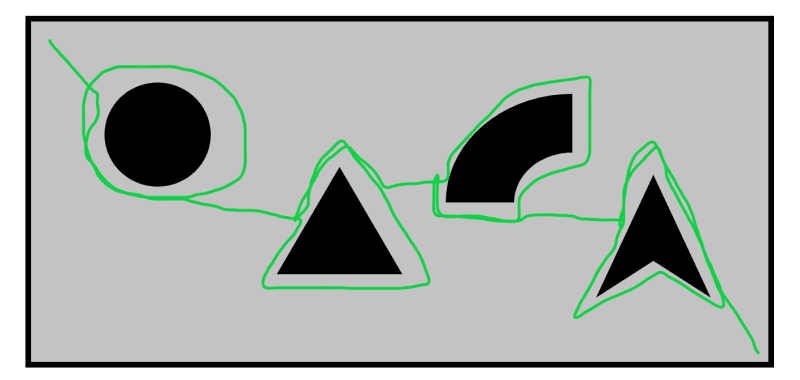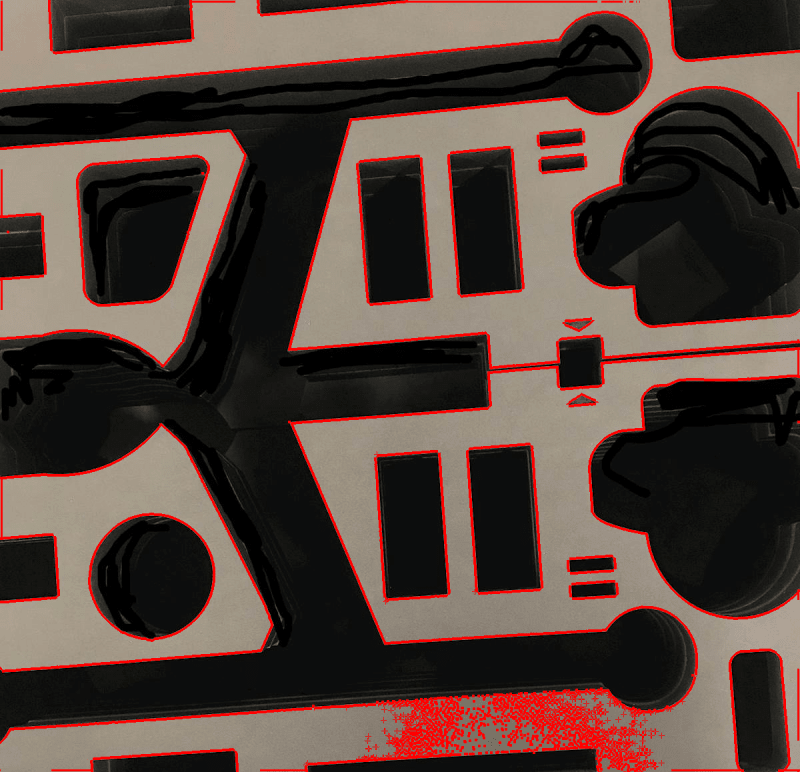jimsmits
Computer
- Mar 12, 2020
- 2
Hello, I am working on a robot that needs to follow a path to surround two dimensional objects. The system will take a picture of an object that has cutouts. This picture will be converted to grayscale and a path needs to be generated that traces each dark part of the picture along the shortest continuous path with a given offset to not come to close to any given object. This is outside my area of expertise, so I am not sure how to get started. I am hopeful someone here can point me in the right direction!
Image attached for clarity.

Image attached for clarity.


